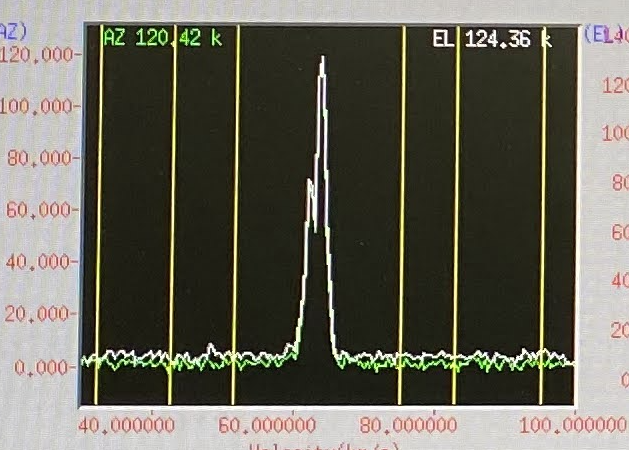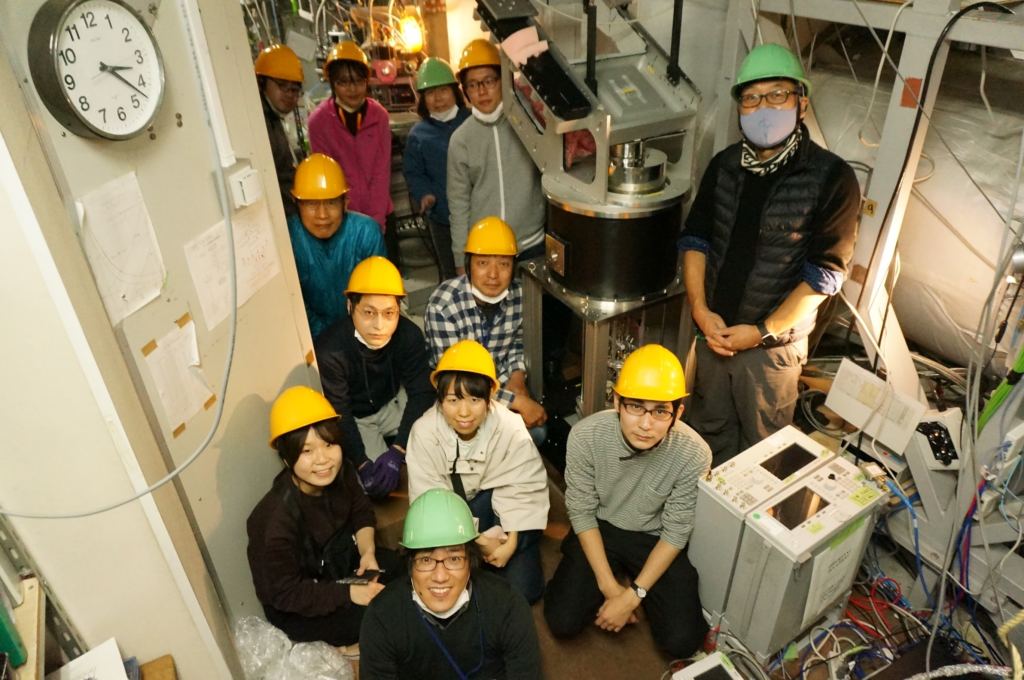Division of Science, NAOJ
The ultra-wideband, high sensitivity 7mm radio receiver installed on the 45m!
A research group led by National Astronomical Observatory of Japan, Institute of Astronomy and Astrophysics, Academia Sinica (ASIAA), and Osaka Prefecture University has developed a new ultra-wideband, high-sensitivity eQ receiver which is capable of observing from 30 to 50 GHz (a wavelength of about 7mm). It was successfully installed on the NRO 45m radio telescope and detected SiO maser line from the late-type star, RR Aql (see Fig. 1). Fumitaka Nakamura, Ryohei Kawabe, and Kotomi Taniguchi from our Division of Science participated in the installation campaign. Chau-Ching Chiong, who is in charge of the receiver development at ASIAA, also participated via zoom from Taiwan. Recently, ALMA started installation of Band-1 receivers with similar band (33-50 GHz). The eQ receiver has the widest bandwidth and highest sensitivity in the similar frequency range. In addition, this is the first time that a receiver developed overseas has been mounted on the 45m telescope.
We will mainly promote the following three sciences: (1) Zeeman measurements with SO/CCS lines, (2) detection of line emission from high-z galaxies, and (3) astrochemistry in 30-50GHz, and will prepare for upcoming ALMA Band-1 observations.
Figure 1: the eQ frist light with a SiO maser line from RR Aql.

Figure 2: the eQ receiver and our installation team


